First Look: MSI XPower X58 Big Bang Motherboard
Manufacturer: MSIEveryone seems to be in the midst of an X58 refresh right now; partly due to the arrival of SATA 6Gbps and USB 3, but mostly thanks to Intel's new 6-core Gulftown Core i7-980X Extreme Edition. We've seen Asus' latest Republic of Gamers motherboard and we got an early look at MSI's latest XPower board at the start of last month. The board has been refined since, so MSI dropped it off at the bit-tech lab in order for us to
The first thought we had was that Folders will love this. We're not entirely sure of the actual bandwidth of the six 16x PCI-Express slots, but at least four have 8 lanes-worth of pins. However, there's no Nvidia NF200 chip on the board for extra PCI-E lanes.
A single large fat 'SuperPipe', as MSI brand it, curves around the CPU socket into the heatsinks cooling the X58 Northbridge and MOSFETs powering the CPU, with another flat MSI-stamped heatsink on the ICH10R Southbridge. It doesn't seem much cooling for a premium motherboard though, and there are no quick water-cooling additions, such as are featured on the Gigabyte UD7 and Asus Rampage X58 boards. Not that we really care so much for the token water-cooling blocks or spaces on boards - serious water-coolers will sort themselves out - but we are curious to see how effective this cooling layout is (that'll have to wait a little, unfortunately).
You'll notice (and perhaps worry) about the two 8-pin EPS 12V connectors for the CPU and the 6-pin PCI-E connector for the PCI-E slots. Don't stress though: under normal conditions (i.e. when you're not trying to break overclocking records) you'll never need to use the second 8-pin connector for the CPU. As for the 6-pin PCI-E connector, it can provide more power and reliability than a Molex plug and PSUs often have plenty of them. In much the same way then, unless you're using all six slots for Folding@Home, you won't need to use it.
The 16 CPU power phases feature DrMOS MOSFETs and low profile High-C caps instead of the ML cap route that Asus uses, and this is just around the CPU area. The other components, like X58 Northbridge, the memory and QPI/VTT seem to have just a phase or two - again whether this makes a tangible difference to Asus' three phases in such areas remains to be seen.
Features include a pair of USB 3 ports and SATA 6Gbps via the white ports - MSI was quick to point out that these will probably change to be right-angled like the rest of the connectors. Other MSI-speicifc bits include the OC Genie button, touch sensitive buttons for power, reset and manual Base Clock control, voltage check points (which are always useful) and manual voltage-tweaking switches, which apparently overclockers love.
On the rear, there's a pin-out for an external dongle, although we hope it's not the plastic one that was included with the Big Bang Fuzion (Lucid Hydra) board. Overall, the board is a good looking example, with all the right bits in the right places. The proof of the pudding will be MSI's BIOS, which we'll be sure to grill thoroughly once we get a retail board.

MSI MPG Velox 100R Chassis Review
October 14 2021 | 15:04


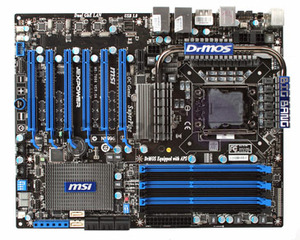
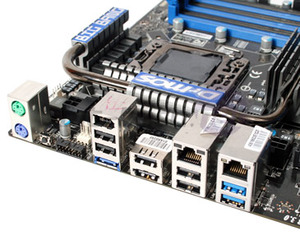
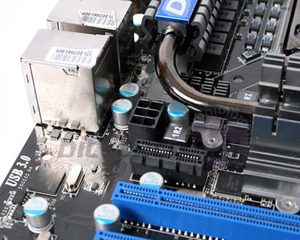
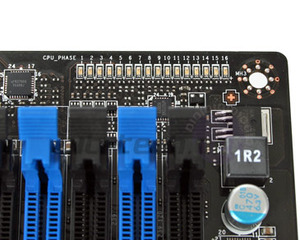

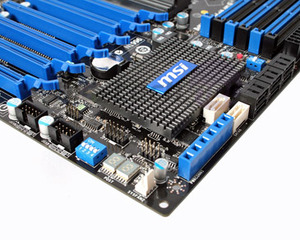

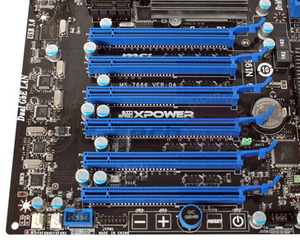







Want to comment? Please log in.